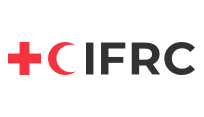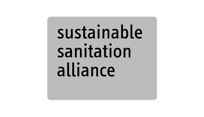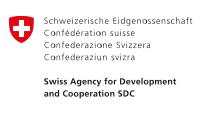Inclusive planning and participation aim to actively engage diverse stakeholders in the process of developing SWM programmes and plans. The objective is to be accountable for ensuring that the perspectives of all stakeholders, particularly marginalised groups, are considered and addressed in SWM activities and services (X.9 and X.3).
Inclusive planning and participation are key to achieving the objectives of short-term impact and longer-term sustainability of humanitarian interventions. The approach actively involves and empowers affected stakeholders to contribute to and inform the plans and activities. It also respects the role of local authorities, the entities usually in charge of, for example, approving the allocation of land for collection points or landfills and managing existing SWM systems and plans. It promotes adequate consideration of diverse stakeholders’ needs, barriers, preferences, resources and opportunities to increase the efficiency, effectiveness and impact of services along the entire SWM service chain. Actively involving representative stakeholders in designs and plans also helps humanitarian actors anticipate and mitigate the risk of discrimination and harm - critical in all interventions.
Inclusive planning in SWM generally starts with a (rapid) assessment P.3. The assessment should be as participatory as possible, involving stakeholders in the process and gathering insights about their needs, capacities, and experiences. It enhances the relevance and accuracy of assessments by integrating the perspectives of those directly affected. The assessment can also help gauge stakeholders’ attitudes and the willingness of community members (including those from marginalised groups) to engage in different forms of SWM, thereby fostering a sense of ownership and empowerment.
Once the information has been analysed, different SWM options should be jointly identified and their viability and implications discussed with the affected stakeholders. Options should consider social, economic and technical perspectives. Meaningful participation is dynamic; the co-creation of SWM response plans can only be achieved when both actors and communities are involved in the decision-making and planning process. The figure below describes what is often referred to as the five ‘levels of participation’: inform, consult, involve, collaborate and empower.
Levels of Community Engagement (adapted from WHO 2020 and ALNAP 2014)
At the beginning of an emergency, people need vital information about how to protect themselves and where to get help (inform). However, there is always time to ask people about what they need. Over time, this consultation should broaden and deepen to shape and give feedback on SWM programme activities (consult). Even at the start of an emergency, there are opportunities to involve people in making decisions about, for example, the frequency of waste collection services or waste segregation options (involve). As stakeholders begin to self-organise, they can choose to partner with humanitarian actors, taking the initiative and proposing improvements (collaborate). Empowerment is usually seen as the highest level and involves stakeholders increasing their agency and activity to initiate, adapt and further engage in leading SWM decisions and coordination.
In keeping with the concept of empowerment, the process may also contribute to longer-term SWM capacity for relevant stakeholders. This process includes requirements and modalities for the continuous operation and maintenance of systems and structures established during the humanitarian response and jointly developed handover and/or exit and decommissioning strategies. Inclusive handover plans should also consider how to manage a (gradual) withdrawal of external donor funding for SWM activities, the capacities of stakeholders such as the local private sector and authorities and cost-recovery options.
Various participatory methods and tools, such as focus group discussions, transect walks or community mapping, can be used to facilitate this process and actively engage the different stakeholders. It is essential that the process is accessible to diverse groups, including children, women, men, older people, host communities, displaced people and different ethnic groups X.9. A comprehensive overview of existing tools and methods can be found in the Compendium of Hygiene Promotion in Emergencies.
People’s level of engagement depends on their motivation and capacity to engage as well as the barriers, opportunities and incentives to participate. The crisis-affected population will not all be the same; it is vital to understand existing differences as well as the factors that separate and unite people. Working with existing local entities can increase their engagement; key individuals from known groups or organisations can act as representatives for others, broadening the scope of inclusion. Strengthened community organisation or bonds (or elected representatives from different stakeholder groups) can enable the affected population to collaborate with or lead the emergency response in partnership with response teams.
A truly inclusive planning process should follow the planning phases outlined below:
- Understand the various dynamics and structures associated with SWM within the community and other stakeholders (stakeholder mapping, KAP surveys) while identifying accessibility and inclusion factors (barrier analysis, gender equity and social inclusion analysis).
- Initiate the project design: who needs to be involved, who will manage the process and who has decision-making powers? Discuss the selection criteria and details of who will benefit from the programme.
- Create an inclusive task force that represents all members of a target community and the relevant authorities, organisations and other key actors.
- Discuss and prioritise possible solutions and ensure that the solutions are specific and implementable.
- Consult host communities on the above and aim to develop SWM services that also benefit them. Where possible, joint activities based on shared goals and interests can help foster peaceful coexistence.
- Produce an action plan that includes activities, resources and responsibilities.
- Mobilise participation following the project’s action plan and implement activities, including the setting up, operation and maintenance of SWM systems. Ensure follow-up on operation and maintenance for at least 6-12 months.
- Evaluate the SWM plans in a participatory way and document and share the results.
The local authorities should also be involved at each stage; authorities play a crucial role in SWM during the planning and response and in taking over responsibilities at the end of the projects.
Participation is an iterative process and incorporates regular feedback loops (‘consult, modify, consult’). SWM interventions need to be carefully monitored and reviewed X.3, especially in humanitarian settings. In addition to establishing feedback and complaint mechanisms and monitoring results, it is important to maintain a dialogue with communities and address potential issues as they arise. Workers should be encouraged to share the feedback they receive from community members and vice-versa. Regular meetings with an SWM task force are recommended to discuss progress and challenges. It can also be beneficial to run small pilots to see what works best. Fully sensitised and participating residents may act as ambassadors and local champions and use successful pilots to promote the system to other community members.
Selected References
A comprehensive collection of key HP components, tools and approaches incl. chapters on community engagement and participation
General guidance on community engagement and participation
(2025): Community Engagement in Humanitarian WASH Responses, Oxfam, UK







